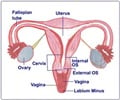Microvasc. Res. 2020 Jan 30
Utility of discovery approach using proteomics to create a biomarker profile for coronary microvascular dysfunction.
Nowroozpoor A, Gutterman D, Safdar B
Coronary microvascular dysfunction (CMD) is a complex disease, difficult to diagnose and often requires advanced imaging. We used mass spectrometry (M ...
Read More
Source: PubMed
Cell Rep
Structural and Biophysical Analysis of the CLCA1 VWA Domain Suggests Mode of TMEM16A Engagement.
Berry KN, Brett TJ
The secreted protein calcium-activated chloride channel regulator 1 (CLCA1) utilizes a von Willebrand factor type A (VWA) domain to bind to and potent ...
Read More
Source: PubMed
Histopathology 2020 Jan 28
Aberrant von Willebrand Factor Expression of Sinusoidal Endothelial Cells and Quiescence of Hepatic Stellate Cells in Nodular Regenerative Hyperplasia and Obliterative Portal Venopathy.
Zhang X, Thomas C, Schiano TD, Thung SN, Ward SC, Fiel MI
Nodular regenerative hyperplasia (NRH) and obliterative portal venopathy (OPV), entities that comprise idiopathic noncirrhotic portal hypertension (IN ...
Read More
Source: PubMed
2020 01 28
Clinical significance of slightly reduced von Willebrand factor activity (30-50 IU/dL).
Bykowska K, Ceglarek B
Von Willebrand disease (VWD) is the most common congenital bleeding disorder, with a clinical picture of mucocutaneous and surgical bleeding varying f ...
Read More
Source: PubMed
Microvasc. Res. 2020 Jan 30
Utility of discovery approach using proteomics to create a biomarker profile for coronary microvascular dysfunction.
Nowroozpoor A, Gutterman D, Safdar B
Coronary microvascular dysfunction (CMD) is a complex disease, difficult to diagnose and often requires advanced imaging. We used mass spectrometry (M ...
Read More
Source: PubMed
Res Pract Thromb Haemost
Bleeding assessment tools to predict von Willebrand disease: Utility of individual bleeding symptoms.
Spradbrow J, Letourneau S, Grabell J, Liang Y, Riddel J, Hopman W, Blanchette VS, Rand ML, Coller BS, Paterson AD, James PD
Bleeding assessment is part of the diagnostic workup of von Willebrand disease (VWD). Bleeding assessment tools (BATs) have standardized obtaining thi ...
Read More
Source: PubMed
Cell Rep
Structural and Biophysical Analysis of the CLCA1 VWA Domain Suggests Mode of TMEM16A Engagement.
Berry KN, Brett TJ
The secreted protein calcium-activated chloride channel regulator 1 (CLCA1) utilizes a von Willebrand factor type A (VWA) domain to bind to and potent ...
Read More
Source: PubMed
Histopathology 2020 Jan 28
Aberrant von Willebrand Factor Expression of Sinusoidal Endothelial Cells and Quiescence of Hepatic Stellate Cells in Nodular Regenerative Hyperplasia and Obliterative Portal Venopathy.
Zhang X, Thomas C, Schiano TD, Thung SN, Ward SC, Fiel MI
Nodular regenerative hyperplasia (NRH) and obliterative portal venopathy (OPV), entities that comprise idiopathic noncirrhotic portal hypertension (IN ...
Read More
Source: PubMed
2020 01 28
Clinical significance of slightly reduced von Willebrand factor activity (30-50 IU/dL).
Bykowska K, Ceglarek B
Von Willebrand disease (VWD) is the most common congenital bleeding disorder, with a clinical picture of mucocutaneous and surgical bleeding varying f ...
Read More
Source: PubMed
Res Pract Thromb Haemost
Bleeding assessment tools to predict von Willebrand disease: Utility of individual bleeding symptoms.
Spradbrow J, Letourneau S, Grabell J, Liang Y, Riddel J, Hopman W, Blanchette VS, Rand ML, Coller BS, Paterson AD, James PD
Bleeding assessment is part of the diagnostic workup of von Willebrand disease (VWD). Bleeding assessment tools (BATs) have standardized obtaining thi ...
Read More
Source: PubMed
Microvasc. Res. 2020 Jan 30
Utility of discovery approach using proteomics to create a biomarker profile for coronary microvascular dysfunction.
Nowroozpoor A, Gutterman D, Safdar B
Coronary microvascular dysfunction (CMD) is a complex disease, difficult to diagnose and often requires advanced imaging. We used mass spectrometry (M ...
Read More
Source: PubMed
Cell Rep
Structural and Biophysical Analysis of the CLCA1 VWA Domain Suggests Mode of TMEM16A Engagement.
Berry KN, Brett TJ
The secreted protein calcium-activated chloride channel regulator 1 (CLCA1) utilizes a von Willebrand factor type A (VWA) domain to bind to and potent ...
Read More
Source: PubMed
Histopathology 2020 Jan 28
Aberrant von Willebrand Factor Expression of Sinusoidal Endothelial Cells and Quiescence of Hepatic Stellate Cells in Nodular Regenerative Hyperplasia and Obliterative Portal Venopathy.
Zhang X, Thomas C, Schiano TD, Thung SN, Ward SC, Fiel MI
Nodular regenerative hyperplasia (NRH) and obliterative portal venopathy (OPV), entities that comprise idiopathic noncirrhotic portal hypertension (IN ...
Read More
Source: PubMed
2020 01 28
Clinical significance of slightly reduced von Willebrand factor activity (30-50 IU/dL).
Bykowska K, Ceglarek B
Von Willebrand disease (VWD) is the most common congenital bleeding disorder, with a clinical picture of mucocutaneous and surgical bleeding varying f ...
Read More
Source: PubMed
Res Pract Thromb Haemost
Bleeding assessment tools to predict von Willebrand disease: Utility of individual bleeding symptoms.
Spradbrow J, Letourneau S, Grabell J, Liang Y, Riddel J, Hopman W, Blanchette VS, Rand ML, Coller BS, Paterson AD, James PD
Bleeding assessment is part of the diagnostic workup of von Willebrand disease (VWD). Bleeding assessment tools (BATs) have standardized obtaining thi ...
Read More
Source: PubMed
Microvasc. Res. 2020 Jan 30
Utility of discovery approach using proteomics to create a biomarker profile for coronary microvascular dysfunction.
Nowroozpoor A, Gutterman D, Safdar B
Coronary microvascular dysfunction (CMD) is a complex disease, difficult to diagnose and often requires advanced imaging. We used mass spectrometry (M ...
Read More
Source: PubMed
Cell Rep
Structural and Biophysical Analysis of the CLCA1 VWA Domain Suggests Mode of TMEM16A Engagement.
Berry KN, Brett TJ
The secreted protein calcium-activated chloride channel regulator 1 (CLCA1) utilizes a von Willebrand factor type A (VWA) domain to bind to and potent ...
Read More
Source: PubMed
Histopathology 2020 Jan 28
Aberrant von Willebrand Factor Expression of Sinusoidal Endothelial Cells and Quiescence of Hepatic Stellate Cells in Nodular Regenerative Hyperplasia and Obliterative Portal Venopathy.
Zhang X, Thomas C, Schiano TD, Thung SN, Ward SC, Fiel MI
Nodular regenerative hyperplasia (NRH) and obliterative portal venopathy (OPV), entities that comprise idiopathic noncirrhotic portal hypertension (IN ...
Read More
Source: PubMed
2020 01 28
Clinical significance of slightly reduced von Willebrand factor activity (30-50 IU/dL).
Bykowska K, Ceglarek B
Von Willebrand disease (VWD) is the most common congenital bleeding disorder, with a clinical picture of mucocutaneous and surgical bleeding varying f ...
Read More
Source: PubMed
Res Pract Thromb Haemost
Bleeding assessment tools to predict von Willebrand disease: Utility of individual bleeding symptoms.
Spradbrow J, Letourneau S, Grabell J, Liang Y, Riddel J, Hopman W, Blanchette VS, Rand ML, Coller BS, Paterson AD, James PD
Bleeding assessment is part of the diagnostic workup of von Willebrand disease (VWD). Bleeding assessment tools (BATs) have standardized obtaining thi ...
Read More
Source: PubMed
Microvasc. Res. 2020 Jan 30
Utility of discovery approach using proteomics to create a biomarker profile for coronary microvascular dysfunction.
Nowroozpoor A, Gutterman D, Safdar B
Coronary microvascular dysfunction (CMD) is a complex disease, difficult to diagnose and often requires advanced imaging. We used mass spectrometry (M ...
Read More
Source: PubMed
Cell Rep
Structural and Biophysical Analysis of the CLCA1 VWA Domain Suggests Mode of TMEM16A Engagement.
Berry KN, Brett TJ
The secreted protein calcium-activated chloride channel regulator 1 (CLCA1) utilizes a von Willebrand factor type A (VWA) domain to bind to and potent ...
Read More
Source: PubMed
Histopathology 2020 Jan 28
Aberrant von Willebrand Factor Expression of Sinusoidal Endothelial Cells and Quiescence of Hepatic Stellate Cells in Nodular Regenerative Hyperplasia and Obliterative Portal Venopathy.
Zhang X, Thomas C, Schiano TD, Thung SN, Ward SC, Fiel MI
Nodular regenerative hyperplasia (NRH) and obliterative portal venopathy (OPV), entities that comprise idiopathic noncirrhotic portal hypertension (IN ...
Read More
Source: PubMed
2020 01 28
Clinical significance of slightly reduced von Willebrand factor activity (30-50 IU/dL).
Bykowska K, Ceglarek B
Von Willebrand disease (VWD) is the most common congenital bleeding disorder, with a clinical picture of mucocutaneous and surgical bleeding varying f ...
Read More
Source: PubMed
Res Pract Thromb Haemost
Bleeding assessment tools to predict von Willebrand disease: Utility of individual bleeding symptoms.
Spradbrow J, Letourneau S, Grabell J, Liang Y, Riddel J, Hopman W, Blanchette VS, Rand ML, Coller BS, Paterson AD, James PD
Bleeding assessment is part of the diagnostic workup of von Willebrand disease (VWD). Bleeding assessment tools (BATs) have standardized obtaining thi ...
Read More
Source: PubMed











